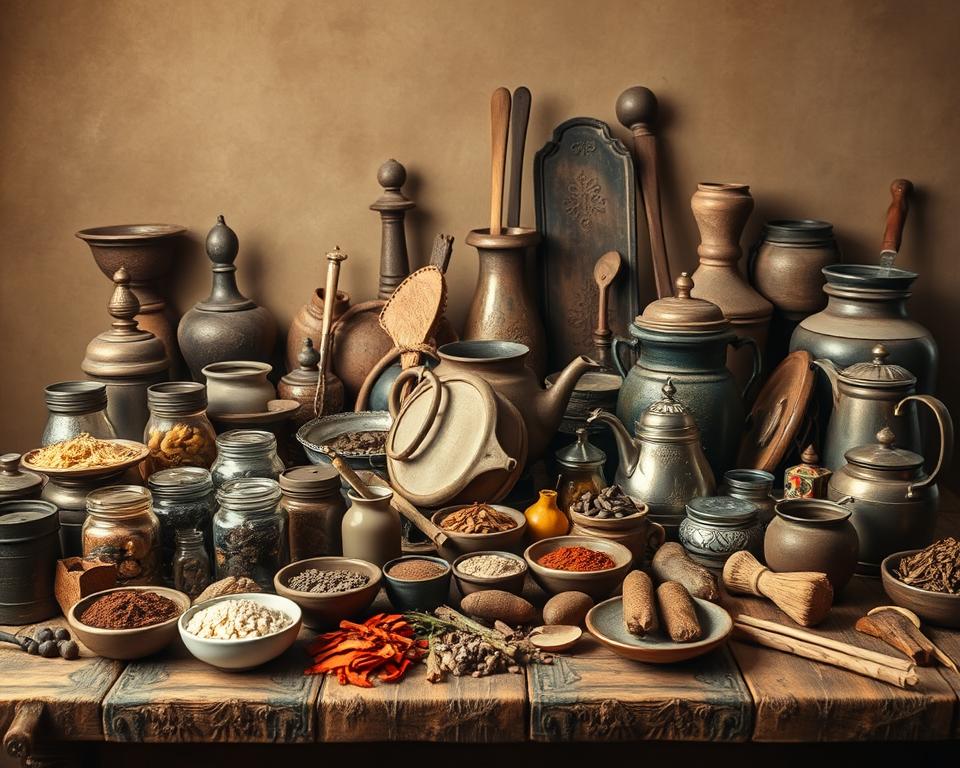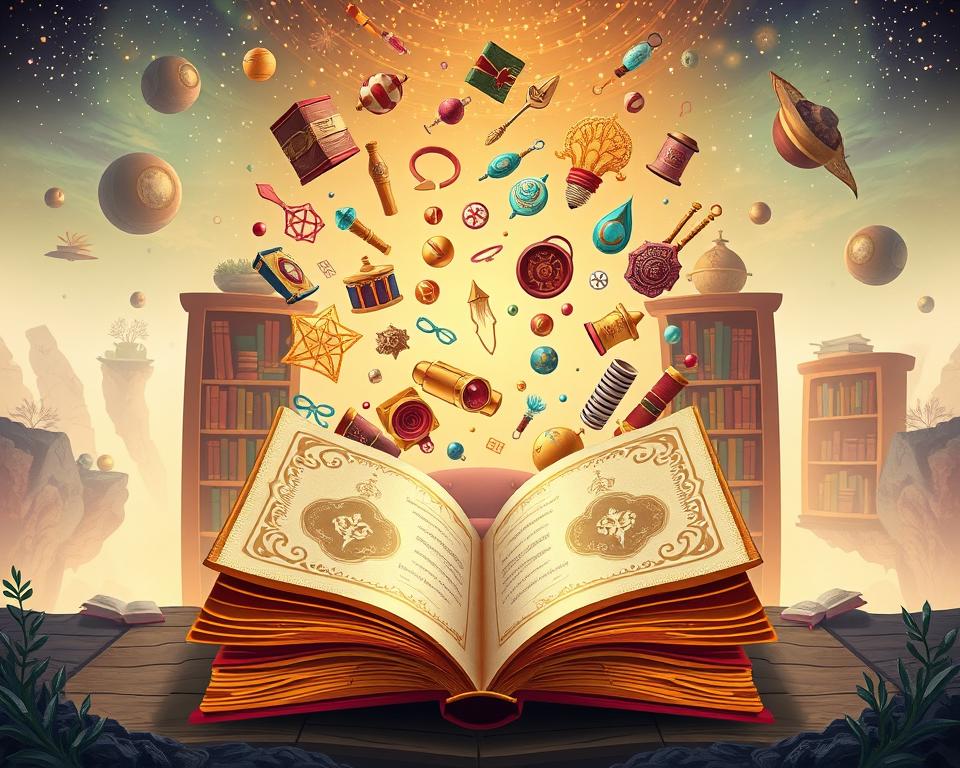Advertisements
What if in half an hour you could learn facts about the world that will spark conversations and amaze people?
With curiosities 30min You can choose and practice interesting facts in short chunks. This way, you'll have better conversations and learn without feeling overwhelmed.
This method shows you how to use data in quick games, travel, and express learning. You'll find true-or-false dynamics, micro-challenges, and easy-to-remember lists.
It includes interesting facts—a cloud can weigh more than a million kilos, Venus rotates upside down, and 15 sunrises a day can be seen from space—and urban landmarks such as Chicago's first skyscraper, the river diversion in 1900, and the Brownie of 1893.
The structure is organized by themes: science, space, body, animals, history, technology, and cities. Each block comes with ready-made examples and tips for using the data in the real world.
Finally, we encourage you to check sources, cite the year when relevant, and respect cultural sensitivities when sharing information.
How to Use Trivia in 30 Minutes to Break the Ice and Learn
In five minutes, you can transform interesting facts into an activity that breaks the ice and teaches something new. This format works well in meetings, travel, or in class..
Micro-challenges: 5 minutes, 10 facts
Prepare 10 facts about the world and give 20 seconds for each one. Ask people to answer whether they think they are true or false.
Use a timer on your phone and record points: 1 for each correct answer. Get a bonus if someone provides the year or an additional relevant detail.
Quick games with friends: true or false
Vary the format: everyone shows T/F cards at the same time or play in “pass the word” mode to keep the rhythm.
- Prepare three thematic blocks (science, art, travel) of limited minutes.
- Start with easy facts and end with the most surprising ones, increasing the difficulty.
- In large groups, create teams of 3-4 people and allow a “wild card” that doubles points.
To break ties, ask for an approximate number (e.g., how many times a day the eyes move) and the closest one wins.
Practical advice: Alternate hosts per round and write down the source and year on a card. At the end, compare two or three key pieces of information and correct recent changes.
Amazing Science: Clouds, Atoms, and “Billions” of Smells
A cloud can weigh around a million kilos
Even though a cloud floats, its mass comes from millions of suspended water droplets. If you add all those drops together, the weight is equivalent to that of thousands of cars.
Turn this into a game: ask "true or false?" and give 10 seconds to answer. Offer a bonus if someone explains in 1-2 sentences how the rising air compensates for that weight.
The first atom was split in 1942 in Chicago
In 1942, at 3:25 p.m., an experiment at the University of Chicago marked the practical beginning of the atomic age.
Mini-challenge: Ask for the name of the university and the time. Give a second cue to speed up the answer, and remember that this fact is key to the history of science.
Humans can distinguish more than a trillion smells.
The trillion figure comes from experimental estimates and is still under debate. It's helpful to mention the years and studies when quoting it to provide context.
Ask the group how many people think they can distinguish many aromas and why; connect them to cooking or wine habits to make it cultural and local to the everyday world.
- Time rounds of “How Does It Work?” to 30 seconds per person for museums and classrooms.
- Record sources and correct cards after the activity; the population uses different scales, such as "billions."
- Finally, ask to compare two pieces of information and note the year and reference for future references.
Tip: Use these facts as quick icebreaker questions and link to themes of space and time in the next section.
Space and time: planets, days and seconds that amaze
See how planets and orbits reveal surprising facts in seconds. These facts work well for quick games and planetarium visits.
Venus and its retrograde turn
Venus is the only planet revolves clockwise relative to its axis. This is called retrograde rotation and is a rarity in the astronomical world.
It completes one rotation in about 243 Earth days, so its day It may be longer than your year. Use this data with caution: measurements change with new studies and years of observation.
15 sunrises and 15 sunsets a day
The International Space Station experiences approximately 15 sunrises and 15 sunsets every 24 days due to its low orbit. The ISS takes about 90 minutes per orbit, or about 5,400 seconds.
This phenomenon is ideal for showing timelapses and explaining how many times the light changes in an hour or minutes.
- Make the rotation of Venus a true or false question for the group.
- 30-second challenge: Name another extreme feature of Venus (thick atmosphere, day longer than its year).
- Timer Demo: Show photos every minute and watch the light change over the course of an hour.
- On trips, visit planetariums and prepare five questions for guides; follow museum regulations around the world.
- Activity for kids: Draw orbits on the ground and walk the model for 3-4 minutes.
Advice: connects these facts with the history of probes and encourages comparing sources before sharing them.
The human body: facts that will leave you speechless
Your body stores surprising data that works well in quick conversations and games. They're easy to explain and lead to safe activities in no time.
Boil almost half a liter. Theoretically, the thermal energy of the body could, in short, heat or boil almost halfway liter of water in 30 minutes. This is a conceptual comparison, not an experiment to try.
House dust. What shines against the light is usually mostly composed of dead cells. Turn this into a true or false game for the group.
Sneeze reflex. Is impossible to sneeze eyes open: a protective reflex closes the eyelids. 1-minute challenge: explain why you can't keep them open.
Tongue and eyes. Your tongue has 16 muscles; learn the mnemonic “16” and award an extra point if someone says the name of one. The eyes move a few 100,000 times a day; asks to guess how many in an hour.
- 1 minute activity: Count blinks and extrapolate.
- Safe game: true/false about dust and sneezing.
- Quick mnemonics to remember numbers and names.
These data help to assess the world biological and start conversations with other people. Always check figures and years in educational sources updated before sharing.
“Understanding the everyday makes the extraordinary a good conversation.”
In the next section, you'll discover incredible animals that complement this tour of the natural world.
Incredible animals: from crocodiles to whales
By observing animals, you can gather quick facts that serve as icebreakers on the world and on visits to reserves.
The crocodile cannot stick out its tongue
A membrane connects the tongue to the palate, which is why the crocodile can't stick its tongue out of its mouth. This adaptation helps prevent water from entering when swallowing.
The heartbeat of a blue whale can be heard more than 3 kilometers away
The pulse of a blue whale is so powerful that it has been detected at distances of over 3 kilometers. Ask your group to estimate the distance in kilometers.
Bonus: Give an extra point if someone mentions size in millions of grams as a reference to body mass.
Flamingos are not born pink and their legs bend at the ankle.
Chicks are gray; the pink color appears with age due to the carotenoids in their diet. The folded joint you see is the ankle, not the knee.
- Round T/F: Ask if the crocodile can stick out its tongue and explain the anatomical reason in 20 seconds.
- Game: Each person describes an animal for 30 seconds without saying its name and the rest guess.
- In aquariums, prepare 5 practical questions for the guide about heart rate, diet, and joints.
- If there are children, draw simple skeletons to learn where the ankle is.
Advice: Remember that sound travels differently in water than in air. Don't disturb animals and compare data if it changes with subsequent years of study.
History and art: from Proust to the artistic Olympic Games
History and art hold anecdotes that serve as keys to quick conversations. Here are three easy-to-remember facts to use in games or museum visits.
The longest book in the world
A la recherche du temps perdu by Marcel Proust has approximately 9,609,000 characters. That number serves as a quick challenge: in 30 seconds, say the name complete book and mentions its length in characters.
Art at the Olympic Games
Between 1912 and 1948 The Olympic Games awarded medals for music, literature, and architecture. Have the group guess which was the first year and which is the last one.
Warhol, Louboutin and the red sole
Christian Louboutin's famous red sole was inspired by the palette of Andy Warhol, particularly her work “Flowers.” Use this to open a discussion about how art influences fashion.
- Challenge: Each person shares an art history fact; vote on the most surprising one.
- In museums, carry cards with 5 quick questions for the guide.
- Identify “hidden details” in a work in 1 minute to keep attention.
“Citing the year helps to situate the events and remember names in context.”
Technology and pop culture: from the first email to Google Images
Technology and pop culture often intersect in moments that change how we search for and share images.
The first email known was simply the text “QWERTYUIOP,” which corresponds to the top row of the keyboard. Ask someone to type it in 2 seconds as a quick test at your next meeting.
In it year In 2000, the impact of Jennifer Lopez's Grammys dress generated such a volume of searches that Google launched Google Images. It's a clear example of how a real need in the world creates a new product.
- 60-Second Game: Put tech and pop culture milestones in order on a timeline.
- Team debate: How many millions of searches did Google Images generate? Don't look for exact numbers; discuss the effect.
- Create cards with names own influencers and associate them with innovations.
- Use these dynamics as icebreakers in offices or technology classes.
Advice: He always cites the year to anchor digital history and reflects on privacy and responsible use of images. No product is a one-size-fits-all solution; each serves a different need.
Food and beverages: products with history and records
Some modern foods began as remedies or solutions for mass events. Here are two clear examples and exercises to use in courses and games.
Ketchup It was sold and even prescribed for indigestion in 1834. Over the years it moved from the pharmacy to the kitchen, becoming a product everyday that you know today at the table.

The brownie It was born in Chicago at the Palmer House for the 1893 World's Fair. This dessert has become part of the local heritage and is associated with fairs and period menus.
- Game: Guess the year of origin; you win extra points if you say the correct year. name of the place.
- Quick Route: Map 3 food stops and prepare 2 questions per stop about history and recipes.
- Mini-challenge: 60 seconds to defend why a dessert deserves to enter the “hall of fame.”
On trips, visit historic bakeries and read informational plaques to validate facts. Encourage people to take photos and respect business rules.
“The stories behind a bite connect the people and places of the world.”
Environment and water: a drop of oil can contaminate liters
With simple examples, you can teach why a single drop has an impact and create activities that raise awareness without alarming.
A drop of oil can contaminate 25 liters of water.
A single drop of oil can contaminate up to 25 liters of water due to its ability to spread across the surface and reduce oxygenation. Explain this with a visual demonstration using oil in water so people can see the surface film.
Liters of water to produce one liter of beverages: context and figures
For comparison, some estimates indicate that it takes about 200 liters of water to produce 1 liter of soft drink. These figures vary depending on the region, agricultural practices, and industrial methods.
- Estimation game: In 30 seconds, each person suggests how many liters of water a liter of a beverage produces; then you reveal the actual range.
- Record the data with the date and year on cards to compare how the numbers change with new studies.
- Set a 5-minute challenge for your child: Design a poster showing the impact of a drop of oil in simple terms.
“Small changes at home add up around the world; check sources before sharing figures.”
Visit environmental education centers and respect local waste regulations. For more educational resources, see the teaching guide for environmental education.
World and geography: countries, cities and square kilometers
There are surprising facts in the world that change your mental scale. Here are three clear facts and quick games to use during travel or conversations.
Vatican City: the smallest country
Vatican City is the smallest country in the world. It occupies few square kilometers and is about 120 times smaller than Manhattan.
Quick test: Present a card and ask to guess its square kilometers in front of a known city.
The longest walking route: 22,531 kilometers
A proposed route from Magadan to Cape Town adds about 22,531 kilometers by roads and bridges.
Game: True or false? Discuss logistics, permits, and how many people would try something like this.
Easter Island heads have bodies
On Rapa Nui, excavations have shown that the famous sculptures have buried torsos several meters deep. Ask someone to name the name local: Rapa Nui.
- 1-minute mini-challenge: Name 5 countries that are small in area or population.
- Link these curiosities with maps and tools to visualize kilometers.
- Plan 3 cultural questions for guides and follow conservation rules.
- Avoid illegal practices such as entering restricted areas; safety and respect come first.
“Visualizing distances and sizes changes how you perceive the world.”
Save the cards with the year of the last update and connect these measurements to the next block about time and clocks.
Clocks, minutes and hours: curiosities about time
A detail about the time in a movie can become a quick question for any group. Use that idea to create a short and interesting icebreaker.
The anecdote: Many lists say that all the clocks in Pulp Fiction read 4:20. It's a popular nod in film culture and works well as a jumping-off point for a dynamic.
Ideas and micro-games
- Lightning question: In 10 seconds, what time does the clock in the scene show? Ideal for opening a round.
- Minute blocks: Define clear segments (5, 10, or 15 minutes) and announce rules at the beginning to control the pace.
- 1-minute challenge: Name 3 movies where time is part of the plot.
- Critical check: Ask the group to review afterwards whether the information is true in all scenes and discuss exceptions.
- Practical tip: Use a timer and soft music to keep the attention of people with limited time.
For film clubs: Prepare cards with the year of release and famous watches. Write down response records and celebrate improvements over the years.
Check out interesting facts from specialized sources before accepting them as absolute.
Records and millions: dollars, people and times
A well-stated number can spark a conversation. Start with an estimation question to engage your group and gauge intuition.
Memorable example: In 2018, a bottle of Romanee-Conti from 1945 sold at Sotheby's for $558,000Question: How many millions did the sale reach? A reward will be given to whoever gets closest.
Wine auctioned for more than half a million
Mention the name of the wine and the year for precision. This helps to fix the figure in memory and compare it with other sales in the art and wine world.
Walt Disney and his awards
Walt Disney has 26 Oscars and 59 nominations in total. Set a 30-second challenge: Name 5 Disney characters and guess how many times Disney was nominated.
- Connect these records to debates about cultural value versus dollar value.
- At tastings or dinners, use anecdotes with respect and responsibility.
- Create record cards by discipline (film, art, science) to vary your games.
- Remember to verify figures with the year and auction house before sharing on social media.
“Records change over the years; update your lists and cite sources.”
Chicago in data: architecture, science, and television
Explore Chicago with quick questions that reveal its role in architecture, science, and television.
The first skyscraper: The ten-story Home Insurance Building is often called the world's first skyscraper. In 60 seconds, you can explain why its steel structure changed how the modern world is built.
River diversion (1900): The city reversed the flow to protect Lake Michigan water and prevent epidemics. Show on a map how many kilometers the route affected and ask someone to name the name of the project and the year.
Television and politics: The 1960 Kennedy-Nixon debate was broadcast from CBS studios in Chicago and shaped how millions of people consume politics on screen.
- City tour: 3 stops with 2 questions per site; carry cards with the year and name of the landmark.
- Quick Play: 60 seconds to explain why the Home Insurance Building changed the history of architecture.
- Skydeck: Climb up and prepare questions about the grid layout; respect safety rules and staff.
Integrate local science (the first split atom in 1942) to connect sectors. Verify figures on plaques and visitor centers; note the year of sources before sharing globally or on social media.
30-minute curiosities to travel better and converse in any country
Carrying useful information helps you connect with people and enjoy each trip more. With a couple of cards and a respectful attitude, you'll turn a visit into a memorable conversation.
Quick tips for using data in urban routes and museums
Prepare a deck of 15 cards per city: includes the name of the place, a key year and a brief fact that explains its local impact.
In museums, organize 5-minute blocks: read the sheet, formulate a question and record the responses of the people in the group.
- Adapt the shape of the game to each country and its etiquette; ask permission before recording or photographing.
- Practice three local phrases to start a conversation and share a local curiosity.
- Choose data that connects with the population and avoid sensitive topics in formal settings.
- Keep a notebook and write down updates by years to keep the information up to date.
- If you're going in a group, rotate the "host" role every 20 minutes and adjust the pace to local schedules and norms.
Repeat the best practices in different countries, but always adjust the pace and respect the location. Invite people to compare information with official guides and brochures; you'll learn more and engage in better conversations.
“Traveling with information is a simple way to get to know the world without imposing opinions.”
Games, challenges and educational uses: turn data into experiences
Turn data into games that teach and engage groups of all ages. Keep your rounds short and clear to maintain energy and focus.
True or false dynamics with points per second
Define simple rules: 10 rounds, 20 seconds per question, 1 point per correct answer and 1 extra if someone adds the year or historical context.
Add a speed bonus: respond within the first 5 seconds. seconds and adds 0.5 points. Use a timer to be fair.
- Includes letters “product"on innovations and their impact on the world to connect topics.
- Use a letter “total” at the end to score points and break ties with an estimation question.
- Adapt the shape for classrooms: mixed teams, rotating roles, and formative assessment.
2-day break program minutes every 5 rounds to get people to breathe and stay focused.
Encourage respect: don't interrupt, don't reveal answers, and celebrate learning more than victory.
“Close each session with 3 minutes of reflection: What did we learn about the world today?”
Keep a record of the questions used to measure progress over the years and update the cards if any sources are corrected.
Conclusion
A brief data pack and a stopwatch They allow you to open conversations and learn about the world in just a few minutes.
In just a few seconds you can use memorable examples: the cloud, the fact that a only planet revolves in a special way, the long world book, the Vatican City country, the Easter Island heads and that the crocodile can take out language as a conversation trigger.
Share responsibly: remember that a drop of oil can and can contaminate liters, that the human body contains data such as moving eyes 100,000 times a day and what is it impossible to sneeze with eyes open.
Measure with clock and seconds, check years and sources for records in millions of dollars, and create your own deck to share with the world population respecting rules and sensitivities. Please verify the total and details before posting.



